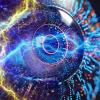The following machine translation is relied upon for poor English proficiency.
I think you can take a look at my theory. The biggest problem with the current slow pace of aging research is the lack of a systematic perspective. However, my current hypothesis has such a systematic perspective, and the description of the self-locking mechanism can explain why current anti-aging approaches have failed but are still correct.
My theory proposes 80 non steady states, a steady-state metabolic state. On these 80 non steady state pathways, some people exhibit metabolic hyperactivity and oxidative stress, some show microcirculatory disorders and inflammatory factors that promote aging, some have insufficient antioxidant capacity and accumulate more aging cells, and some have decreased mitochondrial flash and epigenetic disorders.
The 80 non steady state can be said to cover most of the characteristics of aging theory, but I am not elaborating on these characteristics. Instead, I point out that the aging characteristics of these pathways will all belong to one, leading to a decrease in mitochondrial functionality and triggering the next aging factor, glucose and lipid metabolism disorder, which in turn will lead to a decrease in growth hormone levels.
The initial factor that drives the decline of mitochondrial function in aging is very weak. At the end of puberty, it can be masked by vigorous growth hormone, and when it truly exerts its power, it is at the end of puberty when growth hormone levels decrease. At this time, it will drive the decline of mitochondrial function, which in turn leads to the disorder of glucose and lipid metabolism, which in turn drives the decline of growth hormone. The decline of growth hormone is the most intense factor driving the early stages of aging in this theory, but it is not the focus, but it will also promote the operation of downstream aging mechanisms.
The whole process is like a biological vacuum decay, with the endpoint being 105 years old. The risk of aging and death is no longer increasing, but in fact, all bodily functions that sustain life are in the worst working condition and cannot collapse further. Therefore, the risk of death caused by death is no longer increasing.
And the self-locking mechanism I am referring to in this theory is why intervening in a single pathway is not effective in anti-aging, because the body has entered a suboptimal steady state with self strengthening and self-sustaining functions. For example, when growth hormone decreases, NRF1 expression will decrease, and the quantity and quality of mitochondria will decrease. Growth hormone is secreted in a pulsatile manner, and it relies heavily on ATP pulsatile bursts. As a result, a vicious cycle of self strengthening and self maintenance emerges. Such mechanisms exist in multiple ways during the aging process, covering the current traditional aging theory, which leads to a single intervention pathway having very poor effectiveness.
Edited by 南尧说生, 05 November 2025 - 06:57 PM.















































